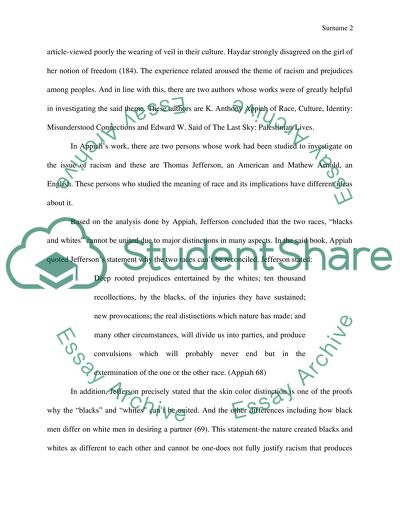Cite this document
(“Racism and Prejudice: An Analysis on Maysan Haydars Veiled Intentions Essay”, n.d.)
Retrieved from https://studentshare.org/english/1478188-racism-and-prejudice-an-analysis-on-maysan-haydars-veiled-intentions
Retrieved from https://studentshare.org/english/1478188-racism-and-prejudice-an-analysis-on-maysan-haydars-veiled-intentions
(Racism and Prejudice: An Analysis on Maysan Haydars Veiled Intentions Essay)
https://studentshare.org/english/1478188-racism-and-prejudice-an-analysis-on-maysan-haydars-veiled-intentions.
https://studentshare.org/english/1478188-racism-and-prejudice-an-analysis-on-maysan-haydars-veiled-intentions.
“Racism and Prejudice: An Analysis on Maysan Haydars Veiled Intentions Essay”, n.d. https://studentshare.org/english/1478188-racism-and-prejudice-an-analysis-on-maysan-haydars-veiled-intentions.


